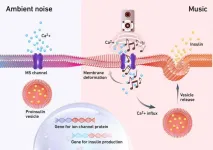Final results of landmark study confirm two-thirds reduction in cases of malaria, including cases of severe malaria, and deaths from malaria, for RTS,S-drug combination over either intervention given alone in settings of highly seasonal malaria transmission.
RTS,S vaccine has similar high efficacy to drugs in preventing malaria in highly seasonal transmission settings.
Overall reduction in malaria incidence likely “tops” 90% among children protected by bednets, vaccines, and drugs.
Seattle and London, August 22, 2023—The final results of a landmark study published in The Lancet Infectious Diseases confirm that the benefits of combining the RTS,S/AS01E (RTS,S) malaria vaccine with antimalarial drugs in settings of highly seasonal malaria transmission continue over five years. The vaccine-drug combination reduced clinical malaria episodes, including cases of severe malaria, and deaths from malaria in young children by nearly two-thirds compared with either RTS,S vaccination or seasonal malaria chemoprevention (SMC) alone.
The Phase 3 study, coordinated by the London School of Hygiene & Tropical Medicine (LSHTM) with partners Institut des Sciences et Techniques and Institut de Recherche en Sciences de la Santé, Burkina Faso; the Malaria Research and Training Center, University of Sciences, Techniques and Technologies of Bamako, Mali; and PATH, Seattle, Washington, USA, followed more than 5,000 children over a total of five years. The study also confirmed that the efficacy of RTS,S in preventing malaria in highly seasonal settings was similar, or “non-inferior,” to that of SMC.
The findings from five years of follow-up are consistent with those from the first three years, which were published in 2021. Those findings contributed to the World Health Organization’s (WHO) decision that year to recommend the RTS,S vaccine for use in settings of moderate-to-high malaria transmission, including its use in areas with highly seasonal malaria or in areas of perennial malaria transmission with seasonal peaks. These new findings confirm the potential of seasonal vaccination to provide a high level of protection in young children over the first five years of life, a period when this protection is needed.
LSHTM’s Professor Brian Greenwood, MD, a member of the research team, said, “In addition to the study’s findings—which by themselves are remarkable—we can say that children who received the RTS,S-drug combination and also used bednets likely had greater than 90% protection against malaria episodes during the study. This points to the importance of ensuring access to multiple malaria prevention tools for reducing the tremendous burden of malaria disease and death in these highly seasonal settings.”
Professor Jean-Bosco Ouedraogo, PhD, of Institut des Sciences et Techniques, also a member of the research team, said, “It is tremendously exciting to know that our research could benefit the health of millions of children at high risk of malaria in countries like Burkina Faso and Mali. The challenge now is to determine how best to deliver the vaccine-drug combination and to follow these highly protected children as they grow older.”
In light of what is already known about the potential for malaria “rebound” following the withdrawal of malaria prevention, children in the study who received SMC and/or the vaccine are being followed for a further two years. This additional follow-up will help to determine how long protection lasts and whether the high level of protection against malaria provided by the combination of SMC and seasonal RTS,S vaccination impaired the acquisition of naturally acquired immunity among the children in the study by reducing the number of infections they received in early life. Currently, SMC is not given to children above the age of 5 years in most countries where it is deployed.
The newly published results come from a two-year extension of the Phase 3 study begun in Burkina Faso and Mali in 2017. The extension began in April 2020, when 5,048 (94%) of the 5,433 children who completed the initial three-year follow-up were re-enrolled.
Over the full five years, protective efficacy of the RTS,S-SMC combination was very similar to that seen in the first three years, with protective efficacy of the combination versus SMC alone being 57.7% and versus RTS,S alone, 59%. The comparable figures for the first three years of the study were 62.8% and 59.6%, respectively. (The protective efficacy of each intervention alone could not be assessed because all children participating in the study received one or both interventions; there was not a group of children who received neither intervention.)
Compared with SMC alone, the RTS,S-SMC combination reduced by two-thirds hospital admissions for WHO-defined severe malaria (66.8%), malarial anemia (65.9%), blood transfusions (68.1%), and malaria deaths (66.8%).
Professor Alassane Dicko, MD, of the Malaria Research and Training Center and a member of the research team, said, “Our study showed that administering the RTS,S vaccine seasonally every year reduces the burden of malaria drastically in children under the age of 5, who are the most affected by this disease. Rapid implementation of this new additional tool is needed to reduce the huge burden of malaria on children in our countries.”
SMC, which involves giving antimalarial drugs sulfadoxine-pyrimethamine and amodiaquine to young children four or five times during the rainy season when malaria transmission peaks, is highly effective in preventing malaria and was recommended by WHO in 2012 for use in areas with highly seasonal transmission.
Continued testing of a subset of children in the study found that the drugs currently used for SMC remain effective in the study areas. However, the study authors concluded that seasonal vaccination with RTS,S could be a potential solution, if resistance to the drugs increases and no alternatives are available.
The study took advantage of the fact that RTS,S efficacy is highest in the months immediately after vaccination, at about 70%. In this study, the primary course of three vaccine doses, administered one month apart in the run-up to the rainy season, was shown to have similar protective efficacy against clinical malaria as four courses of SMC. Efficacy of the combined intervention against clinical malaria was higher in the few months after the primary series of vaccination than after the booster doses, but efficacy was seen in each year of the study.
There were no safety issues following multiple annual booster doses of RTS,S, with some children receiving four seasonal booster doses after the initial three-dose primary series.
“These study results come at a critical time,” said Mary Hamel, MD, Senior Technical Officer at the WHO Product Development Research Unit and Team Lead for Malaria Vaccines. “Nearly half of childhood deaths from malaria are in children living in areas of highly seasonal transmission. These data show the remarkable reduction in malaria that can be achieved by strategically delivering the vaccine with other effective interventions—and the potential for saving many young lives.”
Mark Palmer, DPhil, Director of International Relations at the Medical Research Council, which co-funded the study, said, “It is exciting to see the potential for a significant reduction in malaria cases and deaths in children under 5 demonstrated by this landmark study. This crucial evidence expands the range of tools available to combat this disease in the future.”
“This study’s findings should be a source of hope for families in these highly malarious areas,” said Ashley Birkett, PhD, Global Head of Malaria Vaccines and Biologics at PATH. “But they also present a challenge to regulators, policymakers, and donors: how to ensure that these lifesaving interventions are available and accessible to all who need them. No child should die from malaria or have their potential sapped by repeated malaria illnesses.”
Thomas Breuer, MD, Chief Global Health Officer at GSK, said: “Once again, the RTS,S malaria vaccine is making scientific history. At GSK, we are excited by these new findings—the result of continued collaboration among scientists across the globe, including Africa, and with organizations such as PATH. We continue to see the potential for this vaccine to help protect children at risk of malaria while also paving the way for future vaccines against malaria. We remain fully committed to the rollout of this important vaccine in Africa.”
“We know that seasonal administration of a vaccine poses a challenge to immunization services,” said LSHTM’s Professor Daniel Chandramohan, PhD, a member of the research team. “Not only are additional resources needed to determine how best to deliver vaccines in highly seasonal settings, but we also need to understand the barriers to implementing this approach and whether they can be overcome.”
“Around 45 million children were reached with SMC in 2021,” said Professor Greenwood. “Yet malaria is still killing tens of thousands of children each year in areas where SMC is used, and many more are hospitalized. This study points to what is possible when all the available tools are brought to bear, although new and improved tools and approaches are still needed if we are to end malaria altogether.”
— ENDS —
About the London School of Hygiene & Tropical Medicine
The London School of Hygiene & Tropical Medicine (LSHTM) is a world-leading centre for research, postgraduate studies and continuing education in public and global health. LSHTM has a strong international presence with over 3,500 staff and 4,000 students working in the UK and around the world, and an annual research income of £180 million. LSHTM is one of the highest rated research institutions in the UK and is partnered with two MRC Units in The Gambia and Uganda. Learn more: https://www.lshtm.ac.uk/.
About Institut des Sciences et Techniques
Institut des Sciences et Techniques (INSTech) is a private higher education and research organization based in Bobo-Dioulasso, Burkina Faso. Their dedicated facility for drug and vaccine trials, Services of Clinical Research in Dandé Health District, works in close collaboration with the district hospital and four health centers in Dandé. INSTech also has three clinical research sites, located in Bobo city and rural areas close to their headquarters. INSTech is collaborating with the Ministry of Health under agreement number 2022-202/MSHP/SG/DGESS/DGPP. Learn more at http://instech-bobo.bf.
About Institut de Recherche en Sciences de la Santé
Institut de Recherche en Sciences de la Santé (IRSS) is one of four technical divisions of the Centre National de la Recherche Scientifique et Technologique, linked to the Ministry of Research and Innovation of Burkina Faso and working closely with the Ministry of Health on public health priorities. The overall goals of IRSS are to: (1) seek solutions to health problems through research; (2) coordinate health-related research in Burkina Faso; and (3) disseminate research results. The Western Regional Directorate for IRSS (IRSS-DRO) has extensive experience in malaria research and vector control, working in collaboration with the Centre Muraz, and has been at the forefront of implementing SMC in Burkina Faso over the last several years.
About the Malaria Research and Training Center
The Malaria Research and Training Center (MRTC) was created in 1992 by the government of Mali within the Faculty of Medicine and Pharmacy of the University of Sciences, Techniques and Technologies of Bamako. The Center conducts research and training on a broad range of malaria-related issues, with the goal of developing and testing appropriate strategies for malaria control and elimination. To achieve this, MRTC works with a network of partners in Africa, Europe, and the United States. The Center is organized into several research units, including the Clinical Research Unit of Bougouni-Ouelessebougou, where this trial was conducted. Learn more at http://www.usttb.edu.ml and https://www.mrtc-parasito.org.
About PATH
PATH is a global nonprofit dedicated to achieving health equity. With more than 40 years of experience forging multisector partnerships, and with expertise in science, economics, technology, advocacy, and dozens of other specialties, PATH develops and scales up innovative solutions to the world’s most pressing health challenges. Learn more at www.path.org. Learn more about PATH’s malaria vaccine efforts at www.malariavaccine.org.
The trial was funded by the United Kingdom’s Joint Global Health Trials (Department of Health and Social Care, the Foreign, Commonwealth & Development Office, the Global Challenges Research Fund, the Medical Research Council, and Wellcome Trust), grant number MR/V005642/1. This UK-funded award is part of the second European & Developing Countries Clinical Trials Partnership program supported by the European Union. The trial was also funded by PATH’s Center for Vaccine Innovation and Access through a grant to PATH (INV-007217) from the Bill & Melinda Gates Foundation. The RTS,S/AS01E vaccine was donated by GSK.
Publication: Dicko A, Ouedraogo J-B, Zongo I, et al. Seasonal vaccination with RTS,S/AS01E vaccine with or without seasonal malaria chemoprevention in children until they reach five years of age in Burkina Faso and Mali: a double-blind, randomised controlled Phase 3 trial. The Lancet Infectious Diseases. 2023.
END


